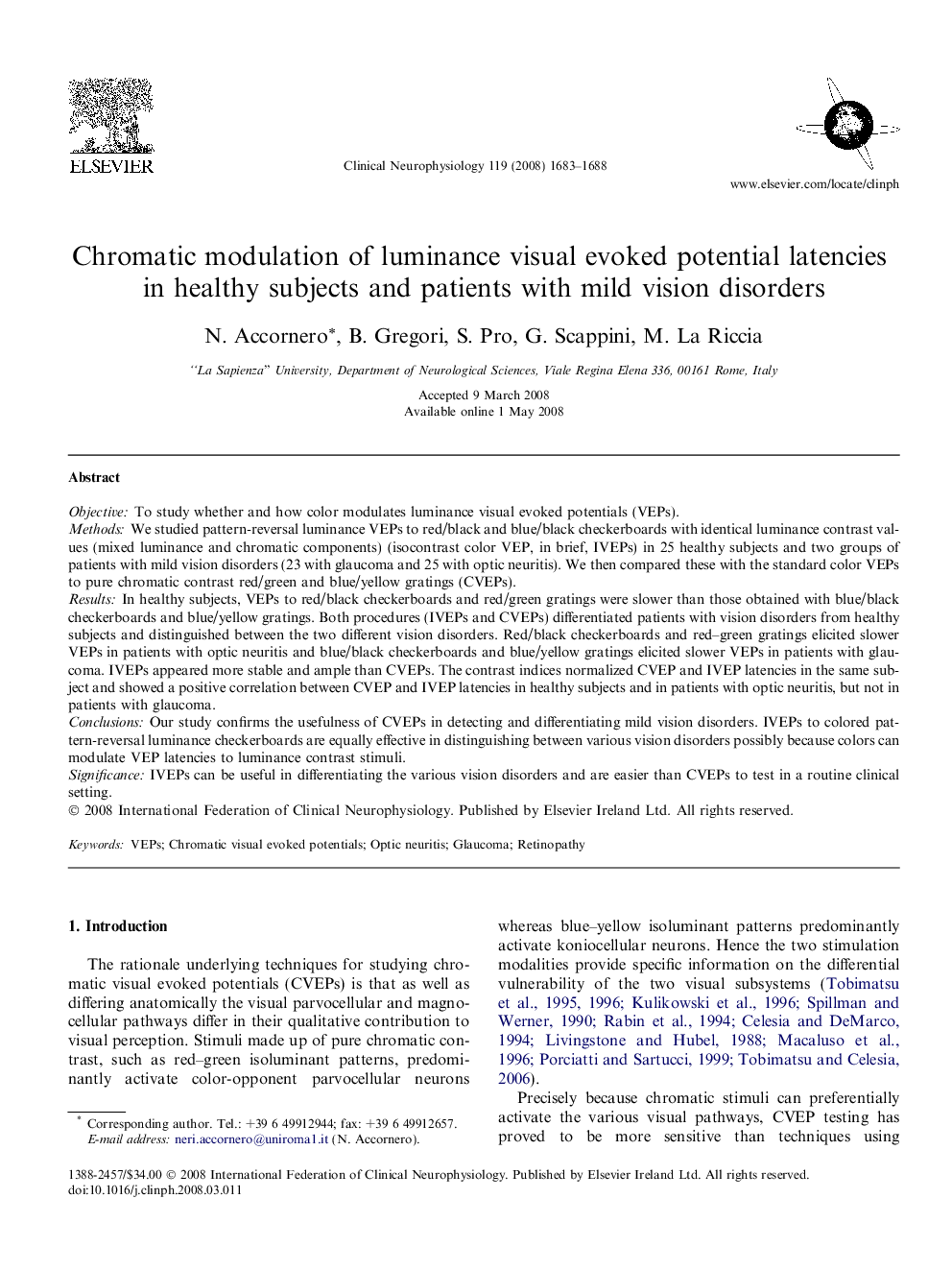| Article ID | Journal | Published Year | Pages | File Type |
|---|---|---|---|---|
| 3047324 | Clinical Neurophysiology | 2008 | 6 Pages |
ObjectiveTo study whether and how color modulates luminance visual evoked potentials (VEPs).MethodsWe studied pattern-reversal luminance VEPs to red/black and blue/black checkerboards with identical luminance contrast values (mixed luminance and chromatic components) (isocontrast color VEP, in brief, IVEPs) in 25 healthy subjects and two groups of patients with mild vision disorders (23 with glaucoma and 25 with optic neuritis). We then compared these with the standard color VEPs to pure chromatic contrast red/green and blue/yellow gratings (CVEPs).ResultsIn healthy subjects, VEPs to red/black checkerboards and red/green gratings were slower than those obtained with blue/black checkerboards and blue/yellow gratings. Both procedures (IVEPs and CVEPs) differentiated patients with vision disorders from healthy subjects and distinguished between the two different vision disorders. Red/black checkerboards and red–green gratings elicited slower VEPs in patients with optic neuritis and blue/black checkerboards and blue/yellow gratings elicited slower VEPs in patients with glaucoma. IVEPs appeared more stable and ample than CVEPs. The contrast indices normalized CVEP and IVEP latencies in the same subject and showed a positive correlation between CVEP and IVEP latencies in healthy subjects and in patients with optic neuritis, but not in patients with glaucoma.ConclusionsOur study confirms the usefulness of CVEPs in detecting and differentiating mild vision disorders. IVEPs to colored pattern-reversal luminance checkerboards are equally effective in distinguishing between various vision disorders possibly because colors can modulate VEP latencies to luminance contrast stimuli.SignificanceIVEPs can be useful in differentiating the various vision disorders and are easier than CVEPs to test in a routine clinical setting.
